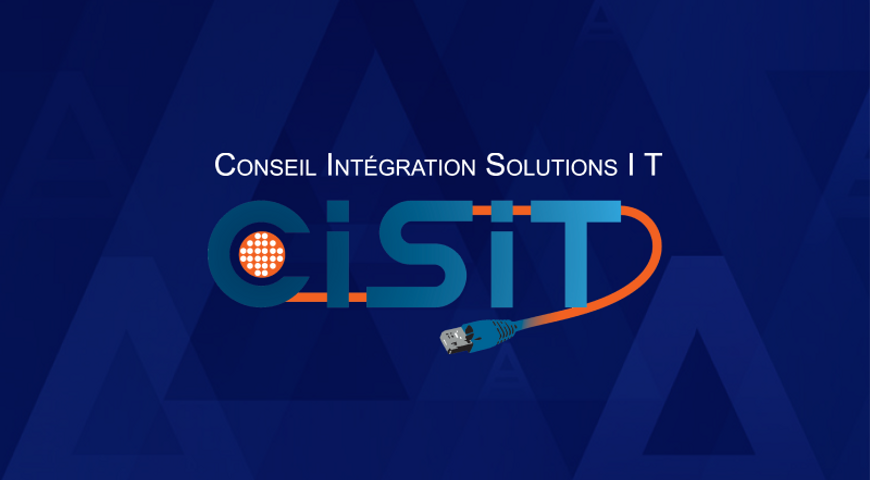
In the dynamic realm of data management, purpose-built backup appliances (PBBAs) stand out as strategic solutions for streamlining data protection. From bolstered reliability to efficient processes, a PBBA offers tailored solutions to meet modern data protection demands.
In this article, we'll navigate the implementation of these appliances, detailing how organizations can seamlessly integrate them into existing infrastructures. While highlighting compelling advantages, we'll also address potential challenges, providing a comprehensive overview for both IT professionals and business leaders seeking to fortify their data protection measures.
What this article will cover:
● What is a purpose-built backup appliance (PBBA)?
● Understanding the need for PBBAs in modern data management
● Advantages of PBBAs over traditional backup solutions
● Key features and components of purpose-built backup appliances
● Choosing the right PBBA solution for your business
● 12 best practices for implementing PBBAs
● Overcoming challenges in PBBA implementation
● Future trends and innovations in PBBAs
What is a purpose-built backup appliance (PBBA)?
A purpose-built backup appliance (PBBA) is a specialized hardware device designed for data backup and recovery purposes. Unlike generic storage solutions, a PBBA is purposefully crafted to optimize the backup process, providing a dedicated platform for safeguarding critical data.
The primary goal of a PBBA is to streamline and simplify the backup process, offering a more efficient and tailored solution compared to general-purpose storage devices.
One of the key advantages of PBBAs are their ability to enhance data protection by providing a comprehensive and dedicated approach. These appliances are equipped with features that prioritize backup and recovery tasks, ensuring reliability and speed in managing large volumes of data. The design of a PBBA allows organizations to deploy a unified and optimized backup strategy, contributing to improved data resilience and reduced downtime in case of data loss or system failures.
As businesses increasingly recognize the importance of robust data protection, purpose-built backup appliances have become important additions to modern IT environments.
Understanding the need for PBBAs in modern data management
In modern data management, the need for purpose-built backup appliances (PBBAs) arises from the growing complexity and volume of digital information that organizations handle. Here are several key factors that highlight the importance of a PBBA in data management:
Efficiency and speed
PBBAs are designed specifically for backup and recovery tasks, with processes optimized for speed and efficiency. This dedicated approach ensures that data can be backed up and recovered quickly, reducing potential downtime in case of system failures or data loss.
Tailored solutions
Unlike generic storage systems, PBBAs provide a purpose-built solution for data protection. They often integrate storage, software and deduplication capabilities in a cohesive manner, offering a streamlined and comprehensive backup appliance tailored to the unique needs of organizations.
Reliability and resilience
PBBAs enhance the reliability of backup operations, contributing to the overall resilience of an organization's data infrastructure. These devices are equipped to prioritize data integrity, reducing the risk of data corruption or loss.
Simplified management
Managing backups can be a complex task in large-scale data environments. PBBAs simplify this process by offering a centralized and user-friendly interface for backup and recovery operations. This simplification is crucial in environments where efficient data management is key.
Scalability and flexibility
PBBA solutions are often scalable, allowing organizations to expand their backup capabilities as their data needs evolve. This scalability ensures that the backup infrastructure can adapt to changing business requirements.
Cost-effective solutions
While the initial investment in a PBBA may be significant, the long-term value is notable. The efficiency gains, reduced downtime, and the ability to scale as needed contribute to a cost-effective approach to data protection.
Compliance and security
Many industries have stringent compliance requirements regarding data protection. Many PBBA solutions come with features that help businesses meet these compliance standards, providing an added layer of security to sensitive information.
The need for PBBAs in modern data management stems from a demand for specialized, efficient, and reliable solutions that can keep pace with the complexities of modern digital environments. By offering dedicated backup and recovery capabilities, PBBAs address these needs, contributing to a more resilient and streamlined approach to data protection.
Advantages of PBBAs over traditional backup solutions
Purpose-built backup appliances offer several advantages over traditional backup solutions, providing organizations with a more efficient and tailored approach to data protection. Here are a few key reasons why so many end-users put their trust in PBBAs:
Specialized functionality
PBBAs are purpose-built for efficient data protection. In contrast, traditional solutions may be generic storage systems with backup capabilities as an additional feature.
Optimized performance
PBBAs are designed to optimize the performance of backup and recovery processes. The integration of hardware and software components ensures streamlined operations, resulting in faster backup speeds and reduced recovery times compared to traditional solutions.
Simplified management
PBBAs typically provide a centralized and user-friendly management interface, simplifying the administration of backup operations. This is in contrast to traditional solutions, which may require more manual configuration and monitoring.
Scalability
Many PBBA solutions are scalable, allowing organizations to easily expand their backup infrastructure as data volumes grow. Traditional solutions may face scalability challenges, requiring more complex adjustments to accommodate increasing storage needs.
Deduplication (dedupe) capabilities
PBBAs often incorporate deduplication capabilities, reducing the storage footprint by eliminating redundant data. This results in more efficient use of storage space, lowering costs and improving overall system performance.
Reliability and resilience
PBBAs are built with a focus on data integrity and resilience, reducing the risk of data corruption or loss. Traditional solutions might lack these specialized features, making them more susceptible to errors.
Integrated hardware and software
PBBAs integrate both hardware and software components into a unified system, ensuring compatibility and optimized performance. In contrast, traditional solutions often involve the integration of separate hardware and software, which may lead to compatibility issues and increased complexity.
Cost-effectiveness
While the initial investment in PBBAs may be higher, cost-effectiveness can be superior in the long run. The efficiency gains, reduced downtime and optimized use of storage space contribute to long-term cost savings compared to traditional solutions.
Compliance features
Many PBBA solutions come equipped with features designed to help organizations meet regulatory compliance standards regarding data protection and retention. Traditional solutions may lack these specialized features, requiring additional steps or tools to ensure compliance.
Improved data recovery
A purpose-built backup appliance’s dedicated approach often results in faster and more reliable data recovery. In the event of data loss or system failure, organizations can restore their data more quickly, minimizing disruptions to business operations compared to traditional solutions.
All told, purpose-built backup appliances offer a range of advantages over traditional backup solutions, providing organizations with a specialized and efficient means of safeguarding their data. These advantages contribute to improved performance, reliability, and cost effectiveness in the realm of data protection.
Key features and components of purpose-built backup appliances
Deduplication
One of the prominent features of a PBBA is deduplication, a process that eliminates redundant data, storing only unique instances. This significantly reduces storage requirements, optimizing space and enhancing overall efficiency.
Compression
A purpose-built backup appliance often incorporates compression technologies, which further reduce the size of stored data. By compressing data before storing it, PBBAs help maximize storage capacity and minimize the impact on network bandwidth during backup and recovery processes.
Replication
Replication capabilities in PBBAs allow for the creation of redundant copies of data in remote locations. This ensures data availability in the event of a primary site failure, enhancing overall data resilience and providing an additional layer of protection against disasters.
Disaster recovery (DR)
PBBA systems facilitate the creation of comprehensive backup sets that can be utilized for swift and effective recovery in case of data loss, system failures or catastrophic events.
Scalability
Scalability is a fundamental component of PBBAs, allowing organizations to expand their backup infrastructure seamlessly as data volumes grow.
Flexibility
PBBAs offer flexibility in terms of deployment options and compatibility with various IT environments. Whether deployed on-premises, in the cloud, or in hybrid configurations, PBBA systems can adapt to the specific requirements of diverse IT setups.
Integrated hardware and software
PBBAs integrate both hardware and software components into a unified system. This integrated approach ensures that the hardware is optimized for the software, leading to enhanced performance, reliability and ease of management.
Encryption
PBBAs often include encryption features to secure data during transit and storage. This ensures that sensitive information remains protected, meeting compliance standards and safeguarding against unauthorized access.
Application integration
PBBA tools are designed to integrate seamlessly with various applications, databases and operating systems. This compatibility ensures that the backup process is application aware, optimizing backup and recovery for specific software environments.
Automated backup policies
PBBA devices often support the automation of backup policies, allowing organizations to schedule regular backups without manual intervention. Automated processes contribute to consistency and reliability in data protection.
Monitoring and reporting
Monitoring and reporting tools are integral components of PBBAs, providing insights into the health and performance of the backup environment. These features enable proactive management, identifying potential issues before they impact data protection.
Choosing the right PBBA solution for your business
Choosing the right purpose-built backup appliance (PBBA) solution for your business requires a thoughtful evaluation of your organization's specific needs, IT infrastructure and plans for growth. These key considerations will help guide you in making the right choice:
Assess data volume and growth
Evaluate the current volume of data your business manages and consider potential growth. Choose a PBBA solution that can scale seamlessly to accommodate increasing data requirements without compromising performance.
Understand data protection requirements
Identify your organization's data protection requirements, including recovery time objectives (RTO) and recovery point objectives (RPO). Different PBBA solutions offer varying levels of performance and capabilities, so align the features with your specific data protection goals.
Determine deployment options
Decide on the deployment model that best suits your business. PBBA solutions may be deployed on-premises, in the cloud or in hybrid configurations. Consider factors such as data residency, compliance requirements and the overall IT architecture when making this decision.
Evaluate deduplication and compression
Assess the deduplication and compression capabilities of the PBBA solution. Efficient deduplication and compression contribute to optimized storage usage, reducing costs and improving overall backup and recovery performance.
Consider replication and disaster recovery
Evaluate the replication features for creating redundant copies of data and the disaster recovery capabilities of the PBBA solution. Ensure that the solution aligns with your business continuity and disaster recovery strategies.
Scalability and flexibility
Choose a PBBA solution that offers scalability and flexibility to adapt to changing business requirements. The solution should easily grow with your organization and support different IT environments.
Integration with existing infrastructure
Assess how well the PBBA solution integrates with your existing IT infrastructure, including applications, databases and storage systems. Compatibility ensures smooth deployment and minimizes potential disruptions.
Security features
Prioritize security features, including encryption capabilities, to safeguard sensitive data during backup and recovery processes. Ensure that the PBBA solution aligns with your organization's security policies and compliance requirements.
Ease of management
Consider the ease of management provided by the PBBA solution. A user-friendly, centralized management interface simplifies daily operations, monitoring and troubleshooting, contributing to efficient data protection management.
Vendor reputation and support
Research the reputation of the PBBA vendor, considering factors such as reliability, customer support and the vendor's track record in delivering effective backup solutions. Reliable vendor support is crucial for ongoing maintenance and issue resolution.
Total cost of ownership (TCO)
Evaluate the total cost of ownership over the lifespan of the PBBA solution. Consider not only the initial investment but also ongoing maintenance, upgrade costs and any potential hidden expenses.
Future proofing
Choose a PBBA solution that can adapt to technological advancements and industry changes. Future proofing ensures that your investment remains relevant and effective as your business evolves.
By carefully considering these factors, you can make an informed decision when choosing a purpose-built backup appliance solution that aligns with your business objectives, data protection needs and long-term IT strategy.
12 best practices for implementing a PBBA
Implementing a purpose-built backup appliance involves careful planning and execution to ensure optimal performance and effectiveness. Here are best practices to consider when implementing a PBBA in your business:
1. Define a clear data protection policy
Establish a comprehensive data protection policy that outlines backup schedules, retention policies, and prioritization of critical data. This policy provides a framework for implementing and managing the PBBA solution effectively.
2. Understand data deduplication and compression
Configure data deduplication and compression appropriately to optimize storage space and reduce the impact on network bandwidth during backup operations.
3. Implement encryption for data security
Enable encryption features provided by the PBBA to secure data during both transit and storage. This is particularly important for businesses that are expected to comply with security standards.
4. Test backup and recovery processes
Regularly test backup and recovery processes to validate the effectiveness of your PBBA implementation. Conduct simulated recovery scenarios to identify potential issues and refine procedures for swift data restoration.
5. Optimize network configuration
Ensure that your network is configured to handle the backup and recovery traffic efficiently. Optimize bandwidth utilization to prevent bottlenecks and delays in data transfer between the PBBA and storage systems.
6. Train IT staff
Provide training for IT staff responsible for managing the PBBA solution. Familiarize them with the features, configuration options and troubleshooting procedures to ensure competent and efficient operation.
7. Monitor performance metrics
Implement robust monitoring tools to track the performance of the PBBA solution. Monitor key metrics such as backup success rates, storage utilization and system health to identify potential issues early.
8. Regularly update and patch
Keep the PBBA solution up to date with the latest firmware, software and security patches. Regular updates help address vulnerabilities, improve performance and ensure compatibility with evolving technologies.
9. Document procedures and configurations
Maintain comprehensive documentation of PBBA configurations, backup schedules and recovery procedures. This documentation serves as a valuable resource for troubleshooting and auditing within the IT team.
10. Consider redundancy and disaster recovery
Implement redundancy in your PBBA configuration to enhance data resilience. Additionally, integrate disaster recovery plans that involve off-site replication to safeguard against site-wide failures or disasters.
11. Review and revise backup policies
Periodically review and revise backup policies to align them with evolving business needs, data growth and changes in compliance requirements. Flexibility in adapting backup policies is crucial for maintaining an effective data protection strategy.
12. Engage with vendor support
Establish a relationship with the PBBA vendor's support team. Understand the support channels available, and proactively engage with vendor support for assistance, troubleshooting and guidance on best practices.
By following these helpful tips, organizations can ensure a smooth and effective implementation of purpose-built backup appliances, maximizing the benefits of streamlined data protection and recovery.
Overcoming challenges in PBBA implementation
While purpose-built backup appliances offer numerous benefits, implementation may bring up challenges that organizations need to address. Here are common hurdles along with strategies to overcome them:
Integration complexity
Challenge: Integrating PBBAs with existing IT infrastructure can be complex, especially if there are compatibility issues.
Solution: Conduct thorough compatibility assessments, work closely with vendors for integration support, and consider phased implementations to minimize disruptions.
Data growth and scalability
Challenge: Managing the scalability of PBBAs to accommodate the ongoing growth of data can be challenging.
Solution: Choose a PBBA solution with scalability features, regularly assess data growth trends, and plan for expansion by selecting a solution that aligns with future capacity requirements.
Initial cost concerns
Challenge: The initial investment in PBBA solutions may raise cost concerns.
Solution: Conduct a comprehensive cost-benefit analysis, considering long-term savings in operational efficiency, reduced downtime and potential scalability benefits. Evaluate total cost of ownership (TCO) over the lifespan of the solution.
Resource allocation
Challenge: Allocating sufficient resources, including personnel and time, for PBBA implementation may strain IT teams.
Solution: Plan for adequate training, consider leveraging vendor support, and delegate responsibilities within the IT team. Prioritize tasks based on criticality to avoid resource bottlenecks.
Backup window constraints
Challenge: Meeting backup windows while ensuring minimal impact on production systems can be challenging.
Solution: Optimize backup schedules, leverage incremental backups, and schedule backups during off-peak hours to minimize disruptions. Utilize features like deduplication and compression to reduce backup times.
Security and compliance
Challenge: Ensuring data security and compliance with industry regulations can be challenging, especially when handling sensitive information.
Solution: Implement encryption, access controls and regularly audit security measures. Choose a PBBA solution that aligns with industry compliance standards and regularly update security protocols.
Data migration
Challenge: Migrating existing data to the PBBA system without disrupting operations can pose challenges.
Solution: Plan for a phased data migration, prioritize critical data and conduct thorough testing before migrating large datasets. Work with vendors to leverage tools and best practices for seamless data migration.
Performance optimization
Challenge: Achieving optimal performance in backup and recovery operations may require fine-tuning.
Solution: Regularly monitor performance metrics, adjust configurations based on workload changes, and engage with vendor support for performance optimization recommendations.
Change management resistance
Challenge: Resistance to change among employees and stakeholders can hinder PBBA implementation.
Solution: Implement effective change management strategies, communicate the benefits of PBBAs, and provide training to ensure a smooth transition. Address concerns and highlight the positive impact on data protection.
Vendor support dependence
Challenge: Overdependence on vendor support for issue resolution can be a challenge.
Solution: While vendor support is crucial, it’s always a good idea to arm your internal IT team with comprehensive training. Establish a balance between leveraging vendor expertise and building in-house capabilities for routine maintenance and issue resolution.
Future trends and innovations in PBBAs
Purpose-built backup appliances are always evolving as technology advances and organizations seek more effective ways to manage their data protection needs. Several future trends and innovations are likely to shape the development of PBBA solutions:
Integration with cloud services
Future PBBA solutions are likely to integrate even more seamlessly with cloud services. This includes enhanced support for backup and recovery operations in cloud environments, providing users with flexibility and scalability.
Hybrid cloud backup strategies
As organizations increasingly adopt hybrid cloud architectures, PBBA solutions are expected to evolve to support hybrid cloud backup strategies. This involves a combination of on-premises and cloud-based backup solutions to optimize data protection across diverse environments.
AI and machine learning integration
The integration of artificial intelligence (AI) and machine learning (ML) capabilities is anticipated to enhance predictive analytics in PBBA solutions. These technologies can optimize backup processes, automate decision making, and proactively identify potential issues for more efficient data protection.
Enhanced security features
With the growing emphasis on data security and privacy, future PBBA solutions are likely to incorporate advanced security features. This includes robust encryption algorithms, improved access controls, and additional measures to safeguard against evolving cybersecurity threats.
Increased automation and orchestration
Automation and orchestration features in PBBA solutions are expected to become more sophisticated. This will streamline backup processes, reduce manual intervention, and enhance the overall efficiency of data protection operations.
Ransomware protection mechanisms
Given the increasing prevalence of ransomware attacks, PBBA solutions are likely to integrate more advanced mechanisms for detecting, preventing, and recovering from ransomware incidents. This may involve real-time monitoring, behavioral analysis and enhanced recovery capabilities.
Efficient data reduction techniques
Future PBBA solutions will likely continue to refine data reduction techniques, such as deduplication and compression. This includes improvements in algorithms and methodologies to further optimize storage utilization and reduce the impact on network bandwidth.
Edge computing backup solutions
As edge computing becomes more prevalent, PBBA solutions are expected to adapt to support backup and recovery operations in edge computing environments. This involves providing efficient data protection for distributed computing resources at the edge of the network.
Enhanced analytics for data insights
Analytics capabilities within PBBA solutions may evolve to provide organizations with more actionable insights into their data. This includes analytics tools that can help organizations optimize backup strategies, identify trends and make informed decisions about their data protection policies.
Comprehensive data governance features
PBBA solutions are likely to incorporate more robust data governance features, helping organizations manage and protect data in compliance with regulatory requirements. This includes tools for data classification, policy enforcement and auditing.
Green IT initiatives
Future PBBA solutions may align with green IT initiatives, incorporating energy-efficient designs and features to minimize environmental impact. This includes innovations in power consumption, cooling efficiency, and overall sustainability.
Summing it up
Purpose-built backup appliances (PBBA) are pivotal tools in the evolving landscape of data protection, offering organizations a dedicated solution for safeguarding their critical information. As industry expert John Gentry notes, "PBBA solutions address the specific needs of modern data environments, providing a focused approach to backup and recovery processes."
Recent statistics further underscore the significance of PBBA adoption. According to a report by MarketsandMarkets, the PBBA market is projected to grow at a CAGR of 9.2% from 2022 to 2027, emphasizing the increasing recognition of purpose-built solutions in meeting the escalating demands of data protection.
As organizations strive for data resilience and efficiency, PBBA solutions are poised to play a pivotal role. In this fast-paced digital era, embracing purpose-built solutions is a sound choice for those seeking to bolster their data protection strategies.
About Acronis
A Swiss company founded in Singapore in 2003, Acronis has 15 offices worldwide and employees in 50+ countries. Acronis Cyber Protect Cloud is available in 26 languages in 150 countries and is used by over 21,000 service providers to protect over 750,000 businesses.



